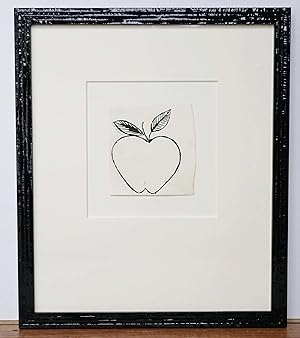
Intimate and Provocative Polaroids by Andy Warhol Displayed in Downtown New York

Andy Warhol, “Self-Portrait in Fright Wig,” 1986. Polacolor Type 108, 4 1/4″ x 3 3/8″. © 2025 The Andy Warhol Foundation for the Visual Arts, Inc. and Licensed by Artists Rights Society (ARS), New York.
In contrast to what mainstream culture might suggest, Andy Warhol didn’t solely produce screenprints of Campbell’s soup cans, famous faces, and dollar signs. He also crafted an extensive collection of Polaroids, showcasing friends, lovers, artists, celebrities, and ordinary individuals. Although he would reuse these images for screenprints, these portraits exude a level of intimacy often absent in his commercial pop art. This aspect is precisely what anchors the newest exhibition focused on his Polaroids, which is currently displayed at the Grove Foundation for the Arts in New York.
Entitled The Dialectical Third, the exhibition features approximately 150 photographs extracted from Warhol’s Ladies and Gentlemen (1975), Sex Parts (1976), Torso (1977), and Querelle (1982) series. In these Polaroids, the artist delves into societal and sexual taboos, gender expression, and explicit themes with such assurance and sincerity that most of these pieces have remained predominantly unfamiliar to the wider audience—until now, of course. Throughout the showcase, attendees will encounter a striking portrait of Marsha P. Johnson, a leading figure in New York’s LGBTQ rights movement; a drag queen adorned with dramatic lashes and soft blue eye makeup; men’s exposed thighs, chests, and torsos, intertwined; and even a self-portrait, where Warhol sports his iconic “fright wig.”
When viewed collectively, these four photographic series introduce a fresh perspective to the artist’s work. Ladies and Gentlemen, for example, departs from the commercial and consumer-focused commentary Warhol often embraced, instead probing how transgender individuals, drag artists, and other queer personas navigate gender along with its diverse aspects of artificiality and genuineness. The series retains its evocative power just as it did 50 years ago, particularly in an age marked by heightened transphobia. Sex Parts and Torso are similarly subversive, depicting male anatomy and intimacy with a bold yet gentle approach. What are the boundaries of gender and sexuality, Warhol seems to ponder, in a society that views divergences from the norm as perilous, if not abhorrent? Additionally, how might those boundaries be encapsulated within a singular photograph?
“This exhibition is grounded in the philosophical idea that truth does not exist in singular, fixed stances,” remarks Dina Giordano, curator and Grove’s executive director. “Andy Warhol’s Polaroid series—which challenge duality, representation, identity, and embodiment—act as a pathway through this conceptual terrain.”
If its title offers any clue, The Dialectical Third is indeed informed by a theoretical underpinning. However, the exhibition does not require a grasp of theory to resonate or hold significance. After all, the Polaroids communicate on their own, their messages reverberating through the years, retaining the same shock, excitement, joy, and explicitness as they did in the past.
Andy Warhol: The Dialectical Third is now on display at the Grove Foundation for the Arts until November 15, 2025.
Beyond his commercial pop art, Andy Warhol also ventured into themes of gender and sexuality through his daring yet intimate Polaroids.
Andy Warhol, “Victor Hugo and Boot,” 1977. Polacolor Type 108, 4 1/4″ x 3 3/8″. © 2025 The Andy Warhol Foundation for the Visual Arts, Inc. and Licensed by Artists Rights Society (ARS), New York.
Andy Warhol, “Marsha P. Johnson (Ladies and Gentlemen),” 1974. Polacolor Type 108, 4 1/4″ x 3 3/8″. © 2025 The Andy Warhol Foundation for the Visual Arts, Inc. and Licensed by Artists Rights Society (ARS), New York.
Andy Warhol, “Helen/Harry Morales (Ladies and Gentlemen),” 1982. Polacolor Type 108, 4 1/4″ x 3 3/8″. © 2025 The Andy Warhol Foundation for the Visual Arts, Inc. and Licensed by Artists Rights Society (ARS), New York.